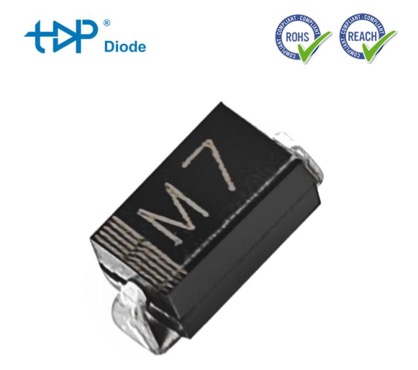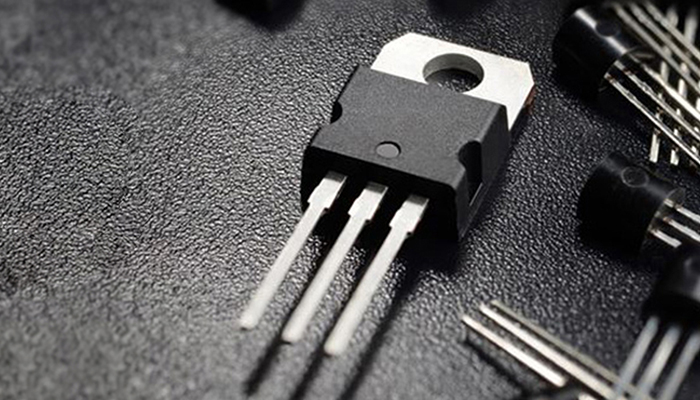The M7 Package: A Stalwart Performer in the World of Active Components
In the fast-paced realm of electronics manufacturing, where miniaturization often dominates the conversation, certain active component packages quietly maintain their essential role through proven reliability, cost-effectiveness, and broad applicability. The M7 surface-mount device (SMD) diode package is one such workhorse, deserving recognition for its enduring presence on countless printed circuit boards (PCBs) worldwide.

What Exactly is the M7 Package?
The M7 refers to a standardized plastic package size for surface-mount diodes (like rectifiers, Schottky diodes, Zener diodes) and sometimes other small signal components. Its dimensions are typically defined as 7.1mm x 2.5mm (Length x Width), with standardized terminal spacing (pitch). This makes it significantly smaller than traditional through-hole packages like DO-214AA but larger than ultra-miniature SMDs like SOD-123 or SOD-323.

Why the M7 Package Matters for Manufacturers and Buyers:
1.The Sweet Spot for Power Handling: The M7 strikes an excellent balance. Its size allows it to dissipate more heat than smaller packages (like SOD-123), making it suitable for applications requiring medium current handling (commonly 1A to 2A continuous forward current for rectifiers). This bridges the gap between low-power signal diodes and larger, higher-power packages like SMA, SMB, or SMC.
2.Robustness and Reliability: The larger size inherently provides better mechanical stability and thermal performance compared to its smaller cousins. This translates to enhanced durability during PCB assembly (reflow soldering) and in the final application, especially under thermal stress or moderate power loads.
3.Cost-Effectiveness:M7 components benefit from mature manufacturing processes and economies of scale. They offer a highly competitive price-to-performance ratio. For applications where ultra-miniaturization isn’t critical, choosing M7 over smaller, potentially more expensive packages can yield significant cost savings without sacrificing necessary performance.
4.Ease of Handling and Assembly: While automated assembly handles most SMDs, the M7’s size makes it relatively easier to handle during prototyping, rework, and visual inspection compared to microscopic components. This can slightly reduce assembly complexity and potential defects.
5.Ubiquitous Availability: The M7 is a JEDEC-standardized package (specifically DO-214AC). This standardization ensures broad compatibility and guarantees a vast, diverse, and stable global supply chain. Multiple reputable manufacturers produce diodes in the M7 footprint, offering buyers choice and security of supply.
6.Versatility: While commonly associated with standard silicon rectifier diodes (e.g., 1N4007 SMD equivalent), the M7 package is also widely used for:
* Fast Recovery Diodes
* Schottky Diodes (especially those needing slightly higher current than SOD-123 allows)
* Zener Diodes (voltage regulators)
* TVS Diodes (Transient Voltage Suppressors)
Key Applications Driving Demand
The M7 package finds its home in a massive range of electronic devices where reliable, cost-effective medium-power rectification or protection is needed:
* Power Supplies: AC-DC adapters, chargers, SMPS (Switched-Mode Power Supplies) – input rectification, output rectification.
* Lighting: LED drivers, ballasts.
* Consumer Electronics: TVs, audio equipment, home appliances (white goods), power tools.
* Industrial Electronics: Motor drives, control boards, power converters.
* Automotive Electronics: Non-safety-critical subsystems (lighting modules, infotainment power).
When sourcing M7 diodes, key specifications to verify include:
* Diode Type: Rectifier, Schottky, Zener, TVS?
* Voltage Ratings: Peak Reverse Voltage (VRRM/V_R) for rectifiers, Breakdown Voltage (Vz) for Zeners, Standoff/Working Voltage for TVS.
* Current Rating: Average Forward Current (IF(AV)).
* Forward Voltage Drop (VF): Crucial for efficiency, especially in Schottky diodes.
* Speed Characteristics: Reverse Recovery Time (trr) for rectifiers.
* Manufacturer & Quality: Partner with reliable suppliers committed to consistent quality and traceability. Ensure components meet relevant industry standards (AEC-Q101 for automotive, for example).
Conclusion: The Enduring Value of M7
While the relentless march towards smaller components continues, the M7 SMD package remains a fundamental pillar in active component design. Its optimal blend of power handling, robustness, cost-efficiency, and widespread availability ensures its continued relevance across vast segments of the electronics industry. For manufacturers designing reliable, cost-conscious products, and for buyers seeking stable supply chains for medium-power solutions, understanding the value proposition of the M7 package is essential. It’s not just a package size; it’s a testament to practical engineering and enduring market demand.
If you want to explore more component,
please visit our website:https://www.topdiodes.com
Or send inquiry to : Luna@topdiode.com



